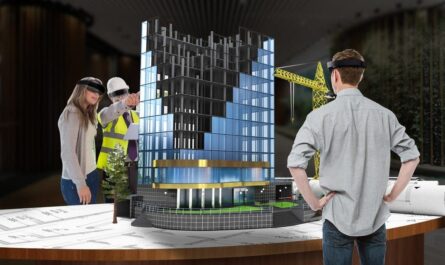3D scanning is increasingly becoming a disruptive technology that is transforming manufacturing, healthcare, engineering and many other industries. By capturing the precise shape and geometry of physical objects into digital 3D models, it is opening up new possibilities and streamlining workflows across various domains. Let us explore some key aspects of 3D scanning and how it is revolutionizing different industries.
What is 3D Scanning?
A 3D scanner uses various technologies like laser scanning, structured light scanning or photogrammetry to digitally capture the shape of physical objects, environmental areas or entire scenes in three dimensions. Unlike traditional 2D scanning, which only captures a flat image, 3D scanning creates digital 3D models that provide the exact dimensions of an object including its surface texture and color. These digitized 3D models can then be easily edited, stored, shared and 3D printed without the need of the original physical object.
Medical Applications
Doctors can now 3D scan patients’ anatomy, injuries or dental structures to create highly accurate digital 3D models. These digital models allow surgeons to precisely plan and simulate complex surgical procedures before the actual operation. This significantly improves the outcome and safety of surgeries. 3D scanning is also transforming dentistry by enabling dental practitioners to 3D scan teeth and design customized crowns, bridges, dentures and implants with accurate fit. 3D printed surgical guides and anatomical models created using 3D scanning are enhancing medical education and training as well.
Industrial Design and Manufacturing
Product design and manufacturing was one of the earliest adopters of 3D scanning technology. Designers and engineers extensively use 3D Scanning to digitize physical prototypes, existing products or components during the design process. This allows them to create highly accurate virtual 3D models which can then beeffortlessly updated, analyzed and used to drive CNC machining or 3D printing for production. Many manufacturers are now using 3D scanning on their production lines to digitize inventory parts for tracking, quality control and facilitating just-in-time workflows. Major automotive companies extensively employ 3D scanning during vehicle development, styling studies, reverse engineering and assemblyline quality checks.
Engineering and Construction
Civil engineers find 3D scanners extremely useful during various stages of large infrastructure projects like roads, bridges and buildings. Terrestrial laser scanners are commonly utilized to efficiently generate highly detailed as-built 3D models or digital documentation of existing structures before renovation. Ground surveying, topographic mapping and project monitoring of construction progress also heavily rely on 3D scanning technology. AutoCAD, Revit and other CAD models of buildings are now directly created from laser scans. Engineers can also digitize potential building sites or conduct virtual surveys without physically visiting hazardous locations by using portable drones and robots integrated with 3D scanners.
Forensic Science and Archaeology
3D scanning has emerged as a very useful tool for crime scene investigation, forensic analysis, anthropology and archaeology applications. Crime scene investigators employ 3D scanners to digitally document and preserve crime scene evidence through highly accurate 3D models. These digital records allow investigators to analyze the scene even after it has been altered. Similarly, forensic pathologists use 3D whole body scanners to detect and analyze gun wounds, bite marks or trauma injuries in greater detail through 3D representation. Archaeologists greatly benefit from 3D scanning technology during excavation projects. By scanning ancient artifacts, fossils, architectural remains or full sites, they can generate digital archives, conduct analysis away from fragile sites and even reconstruct destroyed artifacts and structures.
Cultural Heritage and Tourism
Museums, art galleries, monuments and historical sites worldwide are increasingly adopting 3D scanning to digitally archive, preserve and promote cultural heritage assets. High-resolution 3D scans of valuable paintings, sculptures, relics and archaeological remnants allow these institutions to create shared online digital collections and archives. Detailed 3D models and virtual tours also help in remote research and education. Countries are using drones integrated with 3D scanning sensors to digitally document old architecture, monuments, temples and ruins for heritage preservation. Tourism boards in different regions leverage 3D scans to showcase attractions and niche experiences through immersive virtual and augmented reality applications.
Intellectual Property and Copyright
Another significant use of 3D scanning is for enforcement of intellectual property rights in industries like fashion, luxury goods, engineering components and electronics. High-resolution 3D scans allow detailed comparisons between original designs and counterfeits to prove copyright infringement. Scan data is also being increasingly submitted as evidence for patent litigation in various courts. Furthermore, original designers and manufacturers employ 3D scanning during concept development and prototyping of new products to officially document their initial IP claims. Many companies are also implementing 3D scanning based track-and-trace systems to curb losses from cargo theft and fraudulent warranty claims.
In summary, 3D scanning is proving to be a true disrupter across a diverse range of industries by enabling digitization of physical assets into accurate virtual 3D models. As scanning technologies continue advancing, they will open up newer possibilities that reshape traditional workflows and help tackle pressing challenges related to manufacturing, healthcare, infrastructure development, preservation of cultural heritage and intellectual property protection. The coming years will undoubtedly witness 3D scanning revolutionizing many more industry domains.
Note:
1. Source: Coherent Market Insights, Public sources, Desk research
2. We have leveraged AI tools to mine information and compile it




